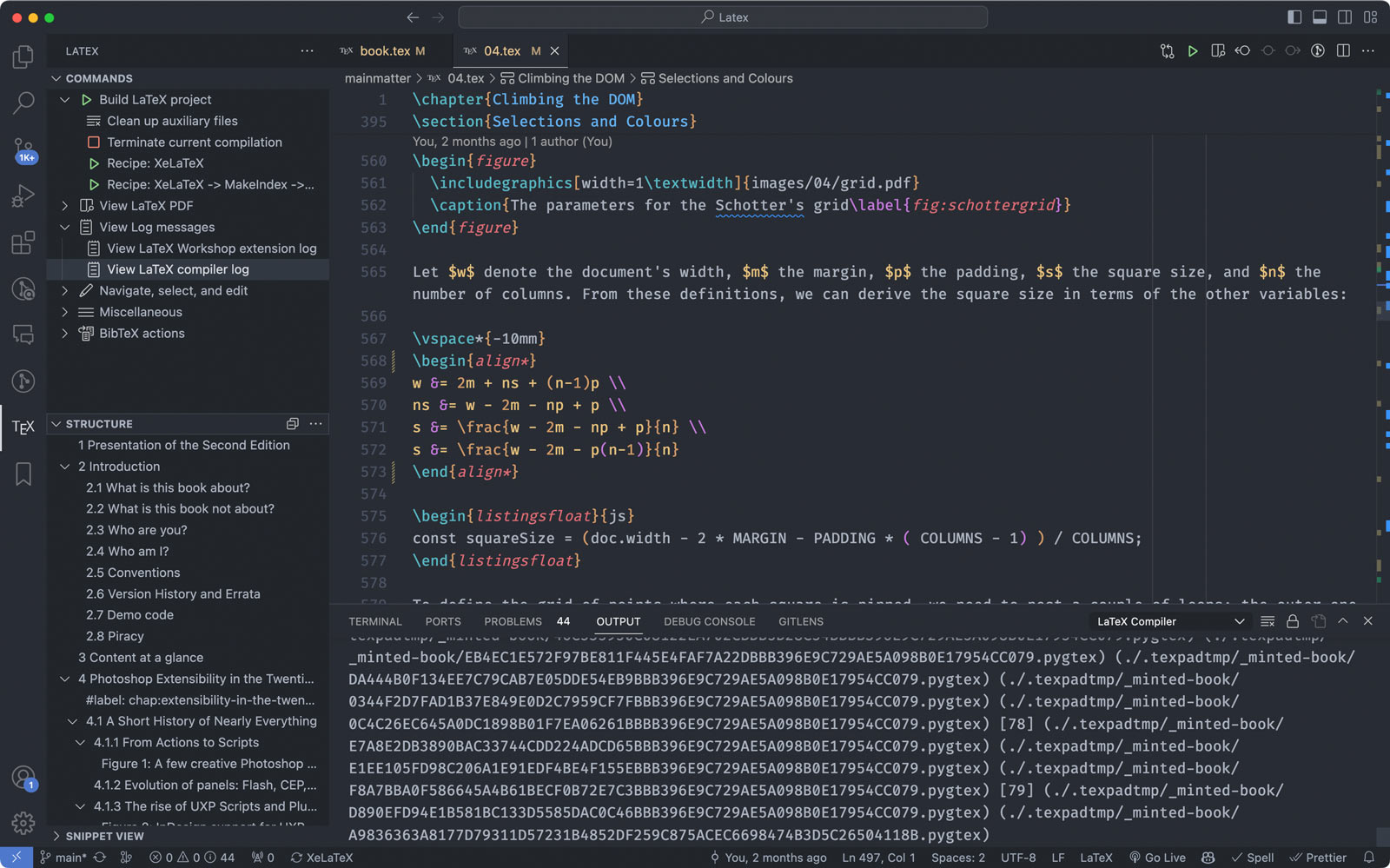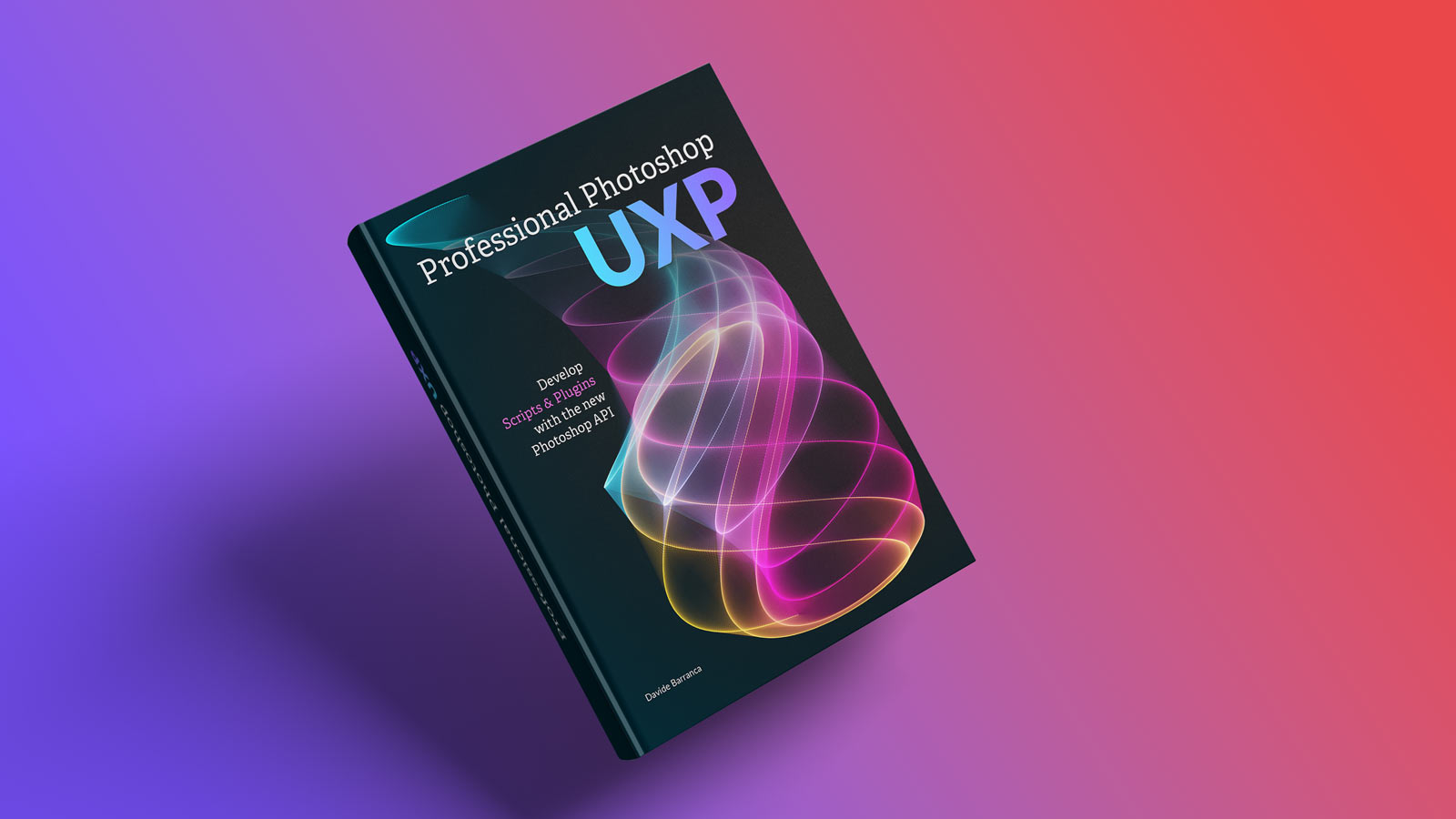Hi everyone, I’m happy to announce that my new book on the UXP Photoshop API is available! I’m genuinely surprised I made it in time for the mandatory Black Friday 2023 deal (promo code BF2023), but I did.
You can read more about it on my courses website page; it’s 325 pages, with a code bundle with 30 UXP scripts and plugins. Here’s one spread as a little teaser.
And the Table of Contents.
More screenshots and info in the book’s website.
👀 Where can I get it?
You’ll also find a way to get a 70-page free sample there.
❓ How does this compare to “Adobe UXP Plugins development with React JS”?
Two main components make up Photoshop extensibility:
► UXP API: the architecture that provides the runtime environment for creating scripts and plugins, integrated seamlessly into various Adobe Creative Cloud applications. Learning it involves understanding how plugins are structured, their lifecycle, commands, how to build their user interface, how to use shared features like Network and FileSystem modules, etc.
► Photoshop API: the interface allowing direct access to the automation of Photoshop features at the core of Scrips and Plugin alike. It includes the Scripting Document Object Model, ActionJSON, Imaging API, and everything else the UXP API uses to interact with Photoshop as its host application.
Think about the UXP API as an office: it has a well-defined architecture, internal operational rules, processes and control systems, as well as features standard in every other workplace—like restrooms and hiding places. The Photoshop API instead is the team of people doing their job there—in our case, they are processing images. The InDesign API may inhabit the same office yet perform different tasks. To get stuff done, you must know about both the office and the people.
► Adobe UXP Plugins development with React JS is primarily about the UXP API and uses some Photoshop API for demonstrative purposes. It also teaches you ReactJS from scratch—one of the most popular JavaScript libraries, incredibly useful for building UXP plugins’ User Interfaces.
► Professional Photoshop UXP is primarily about the Photoshop API and uses some UXP API for demonstrative purposes.
They are specular in their approach and complementary at the same time. Reason why they’re available as a bundle, too.
Trivia
- The whole process has been comparatively fast, it was done in about eight months: past books have taken me 2-4x the time. My daughter is studying abroad 🇮🇪 and education is expensive: need is the mother of all inventions.
- It started as an update to the “Professional Photoshop Scripting” book, but it quickly became apparent that it was a different beast altogether. I’ve kept a few old bits (concepts, illustrations) here and there, but it’s mostly brand new content.
- I’ve laid down the structure using the MindNode app. Then I disregarded it and wrote the book in a different order.
- The first two drafts were written in MarkDown with the Obsidian app, which is beyond awesome.

- All the vector graphics have been made in Affinity Designer (sorry, Adobe), and are kept as vectors in the PDF.

- The book has entirely been designed with LaTeX, using the custom styles I’ve painfully crafted over the years. Recently, I’ve switched to LaTeX Workshop, a free VSCode plugin, but Texifier is also a great app if LaTeX is your poison.

- I might have finally learned how to use commas in the English language, thanks to Grammarly.
- The cover comes from a Processing Java sketch of a Lissajous curve that I wrote, using this project as a starting point.

- Yes, there’s a chapter dedicated to ChatGTP and AI-assisted coding, and I’m rather proud of it (bar one illustration, which will ruin my reputation—I’m not going to say more!).
If you’re curious and want to know more, 👉 check it out! 👈
Your support is always much appreciated ❤️ Thanks for your time, and happy coding!


